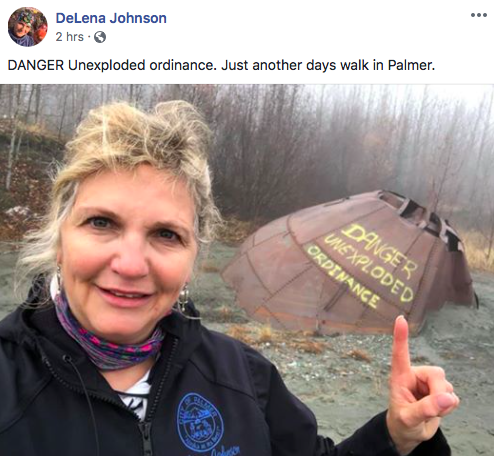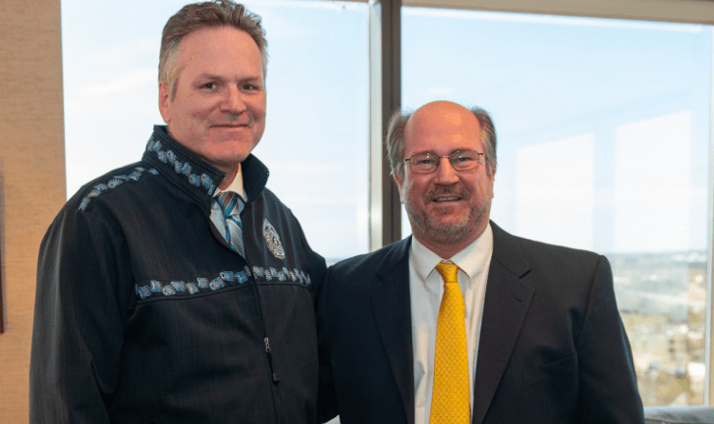STILL RECEIVED A 10 PERCENT INCREASE IN ITS FUNDING
After being on the job for less than a year, Commissioner of Administration Kelly Tshibaka and a group of her assigned investigators in the Oversight and Review Unit have completed a 65-page study on the Public Defender Agency that shows the agency was not filling up to 20 percent of vacancies and, because of its quirky way of counting cases, was over-counting the caseloads of staff attorneys.
In fact, the report shows the Public Defender Agency is offloading much of the work that is primary to it; it’s handing it over to the Office of Public Advocacy, a little-known legal agency that focuses on legal work for elders, youth, and other vulnerable Alaskans.
[Read the entire 65-page report here]
Alaska’s Commissioner of Administration goes after data. As a former federal Acting Inspector General for the Federal Trade Commission, she looks for inefficiencies, waste, and fraud. She says her findings of the Public Defender Agency aren’t the worst she’s seen in her career, but there are structural problems that the agency has the power to correct. If it wants to.
The oversight report comes not long after former Attorney General Jahna Lindemuth accused the Dunleavy Administration of budget cuts that “bleed” the agency’s ability to take care of indigent legal defense needs.
Not so, said Tshibaka today. In fact the the Public Defender Agency received a $1.16 million budget increase in the Dunleavy budget than it did in the FY19 budget approved by Gov. Bill Walker. That equates to a 5.2 percent increase in one year. It allows the Public Defender Agency to hire 10 more positions.
There was more. Gov. Michael Dunleavy signed HB 49, to roll back the lenient provisions in the much-maligned “crime wave bill” Senate Bill 91. HB 49 had another $1.3 million for the Public Defender Agency to hire 10 more positions, nearly another 5 percent increase.
But wait, there was more. Another $900,000 in supplemental funding was authorized by Dunleavy for the FY19 “indigent defense service caseload.” The Administration also agreed to pay each attorney’s $660 Alaska Bar Association annual dues.
And yet, the agency operated with a vacancy rate of 8-20 percent in some sections.
“The PDA has been intentionally holding open 4-7 vacancies for several years, drawing from its personal services funds to pay for other expenses, like contractor services. This has intensified its staffing challenges, particularly in regional offices,” the report says.
Tshibaka said that if the vacancies were filled, the caseloads would come down, but since the agency operates independently the Dunleavy Administration cannot force the Public Defender to hire those positions.
She also said that although it was difficult to accurately determine the caseloads of attorneys in the Public Defender Agency due to inconsistent reports, the range is between 145-154 cases per attorney, within professional standards across the nation.
Thus, the claim that the agency is constitutionally out of compliance because of caseloads is false.
The assessment of the Public Defender Agency shows that it counts cases differently than the Office of Public Advocacy. One case is often counted two or three times, and handled inefficiently, making it appear that the workload is more than it is.
For example, if a client is assigned a Public Defender at PDA, but the agency decides it has a conflict because it is representing another client involved in the case who has an adverse interest, the first client is referred to the OPA, but the PDA gets to count it as a case.
The OPA is taking on more and more conflict cases, when it was really set up to do guardian ad litem work.
Examples include the murder of David Grunwald in 2016, involving five teens; and the murder of Cynthia Hoffman at Thunderbird Falls, which involved six people, three of them teens.
Between those two murders, nine of the 10 cases were sent to the OPA.
The Public Defenders Agency uses a weighted system when counting caseloads, and it “conflicts out” of cases because the agency does not put silos around its work so that attorneys can work on cases without having a conflict with another client.
“If the PDA cannot find ways to substantially reduce the conflict rate, it risks undermining its core mission of being the primary agency providing constitutionally mandated, court-appointed legal representation for indigent clients,” the report summary says.
The legal agency also has attorneys doing work that should be done by assistants or paralegals. Because the Public Defender has total control over his or her budget, he/she can add more attorneys or restructure to add more paralegals, who could handle many of the functions now being done by attorneys.
“The PDA would operate more efficiently if it hired more support staff to assist its attorneys and provided better training for those staff. This would reduce the felt-caseload burden on the PDA’s current attorneys by leveraging more effectively the skill of the paralegals and other support staff,” according to the investigators.
The agency, being examined by the Department of Administration for perhaps the first time, began to make changes after the former Public Defender Quinlan Steiner quit in April, one day after an interview with Commissioner Tshibaka.
The new Public Defender, Sam Cherot, was careful in her response, but attended a press conference held in Anchorage this morning by Commissioner Tshibaka.
“The PDA actively cooperated with DOA in their review of the Agency’s workloads, management, and operations,” Cherot said in a prepared statement. “In my new role as Public Defender, I am committed to considering the findings and recommendations of this report, and the part they may play in the development of long-term solutions and goals for the agency.”
Watch for Part II: A deep dive into recommendations by the Department of Administration’s Oversight and Review Unit.











